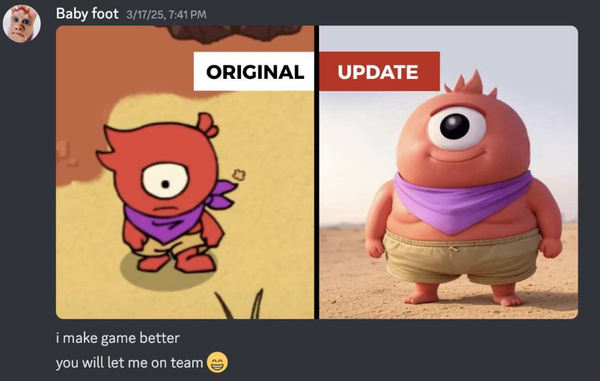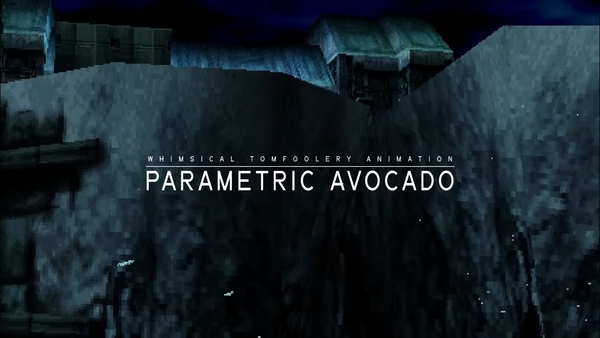That wasn't very cozy of you
Also: the legacy of Lego Island, old chums, and AI gym bags.

EX is a research report about digital culture. You can learn more here. This week: menhera, Mind Brilliance, and hidden husbands.
1. The online mythos of LEGO Island
For some of us, exposure to these dulcet tones is enough to whisk us back to Brickolini's, the pizzeria that serves as the pride and joy of LEGO Island. An open-world adventure game replete with buildable vehicles and iconic characters like "The Brickster" (one of the '90s' many half-baked Hamburglar knockoffs), LEGO Island has since become a landmark in younger millennials' collective memory of the '90s. Even in recent years, the game continues to be the subject of speedruns, longplays, and video essays that get respectable amounts of views on YouTube.
There are a couple of potential explanations for LEGO Island's sustained popularity. Firstly, LEGO Island managed to achieve lasting virality on YouTube over a decade ago; this LEGO Island error message became popular "YouTube Poop" fodder around 2010, and a TikTok that references this meme garnered 100k likes just last month. However, beyond this specific meme, LEGO Island resonates with a variety of gaming trends seen on YouTube and TikTok. Younger gamers have flocked to LEGO City: Undercover as a way of participating in PG-rated, GTA-flavored debauchery, recalling the open-world antics that LEGO Island once enabled for an older generation. Meanwhile, other TikToks imbue LEGO Island with a nostalgia for the aesthetics of '90s PC hardware, which has become a common format for highlighting older PC games on TikTok.
2. The interior design TikTok drama breakdown

Over the past week, a beef between two "DIY" interior design TikTokers attracted the attention of gawkers outside of their usual viewership. First, TikToker TayBeepBoop posted a video (since deleted) that accused fellow interior design TikToker Kaarin Joy of numerous counts of plagiarism. The accusation quickly backfired as viewers were quick to point out the hypocrisy of gatekeeping design trends while labeling your content DIY. An "ex-friend" of TayBeepBoop even posted receipts (first disclaiming “this isn’t very cozy life of me”) that prove TayBeepBoop is herself prone to remixing other creators' ideas. TayBeepBoop posted an eventual apology, but not before discourse about "DIY plagiarism" had overtaken TikTok.
While the consensus on TikTok is that TayBeepBoop goofed up, for many on Twitter and beyond, these designs were simply too ugly to warrant such a passionate feud. For others, however — especially anyone who's visited a coffee shop, stationary store, or gynecologist’s office in East LA over the past decade — none of this is anything new. Mossy and / or oddly shaped mirrors, squiggly lines, and clashing patterns have been fixtures of Pinterest and Tumblr long before people started gathering them under the loose umbrella term "maximalist." But regardless of how you feel about the designs themselves, it's undeniable that this feud is specific to this era in social media, where curators of "aesthetics" are encouraged to develop their taste into a brand or career as an influencer. A few years ago, someone like TayBeepBoop might have settled for a mildly viral Lookbook.nu post; today, however, interior design TikTokers have the chance to launch commercial lines and sell work directly to their viewers, defeating any spirit of collaboration.
3. YouTube channel “Mind Brilliance” seems inaccurately named
When people talk about YouTube’s Trending tab as a forbidden vault of brain-liquefying visions, they’re talking about stuff like the channel Mind Brilliance. A frequent sight on the Games Trending page for the last few months, its uploads are all Shorts compilations of freebooted Twitter/Reddit posts layered over footage of Minecraft parkour and packaged with some kind of wholesome/respectful title. It’s a typical “faceless channel” strategy (low-effort, semi-automated content without a human host) and a modern descendant of the Reddit story channel craze that took over YouTube around 2019.
The interesting things here are 1) that this kind of junk content still rises to the top, despite the demonetization of many low-effort get-rich-quick channels; and 2) that the name crosses into self-parody. As the YouTuber Kyle Hill pointed out in a video about science AI channels, there’s a distinctive feel to the names of many trash channels — their creators are running too many accounts to care about appearances, so they just slap a couple of on-topic words together without proofing them for human eyes.
4. An AI project that actually built an audience
Despite all the AI hype, it seems pretty hard to make money as a “creator” that relies on products like Midjourney, ElevenLabs, or Runway. Even if you have a big hit in one phase of AI content (“X as an 80s sitcom,” Balenciaga, Wes Anderson, “Ballin’” covers) nobody remembers who posted it and nobody’s watching anything from your channel that doesn’t have the current meme in the title.
One exception to this is the AI VTuber Neuro-sama, who streams daily on Twitch. Her audience has actually stuck around since her debut in 2022, and has even created a bunch of unofficial channels reposting stream highlights, which is YouTube’s sincerest form of flattery. Her fanbase is either called “The Swarm” or “gym bags,” in reference to an infamous on-stream rant. The channel is high-effort for an AI project — Neuro’s programmer, Vedal, runs it full-time and often talks to the bot on stream, as well as setting up collaborations with other VTubers. Under the hood, there’s a lot of software working together: a chatbot, a text-to-speech voice, a game-playing AI, and a custom Live2D animated avatar. Neuro-sama is really the opposite of the “faceless channels” that AI get-rich-quick types try to design; here, the fans stick around because of Neuro’s familiar look and voice, even as Vedal continues to fine-tune them.
5. William Friedkin’s death revives market for William Friedkin content
Legendary Hollywood director William Friedkin (The Exorcist, The French Connection, Sorcerer) died on Monday. Twitter was full of remembrances from people who saw him on set, like Guillermo del Toro, or in the classroom, like the writer Aaron Stewart-Ahn. Beyond his triumphs as a director, Friedkin was well-known among Film Twitter types as a hall of fame interview subject and for an iconic clip where he roasts Nicolas Winding Refn point-blank.
It’s a cliché now to say that The Exorcist is the most influential horror film ever. But you can also find film academics who were around back then who swear that the sensation around its release (it made $1.3 billion in today’s dollars) made it the single most talked- and written-about film of the 1970s.
6. Skibidi toilet completed the discourse cycle
Skibidi toilet, a bizarre series of YouTube shorts about singing toilets made with Source Filmmaker, has completed a full social media discourse cycle and should be awarded some kind of prize. The videos exploded in popularity on YouTube in the spring, becoming a fixture of the Trending page; a big tweet in July brought it to the attention of an older crowd, leading to “frightened and confused” reactions; now, after everyone’s gotten used to it, it’s become uncool to see it as anything other than typical YouTube zaniness.
The series itself is still massive. Views have fallen from their June peak, but Wednesday’s “Skibidi toilet 56” has reached more than 22 million views already. You’re not going to beat those numbers unless you’re MrBeast or a band with a new hit single.
7. This anime idol became the face of online mental health

Fans of Riamu Yumemi, a fictional idol from the Japanese franchise The Idolmaster, were elated to discover official artwork of her trapped in a Saw-type deathtrap with a bomb collar around her neck. As a series of life sims, The Idolmaster tasks the player with producing a set of pop idols, developing their careers and optionally entering romantic relationships with them. Even if you're not into The Idolmaster, you might have seen Riamu around the internet before, particularly in memes that depict her as clumsy, panicked, or depressed. Riamu was arguably poised to become a fan favorite since her inception, fulfilling the archetype of an "otaku idol" who depends on her fans' pity as a means of sustaining her popularity.
She's often considered an embodiment of "menhera," an online subculture that originally emerged from 2channel (the Japanese anonymous message board that inspired 4chan). The idiom "menhera" is derived from "mental healthers," a term used to describe users who frequented 2ch's mental health-themed forum. As a result, menhera eventually became associated with poor physical and mental health, excessive self-pity, and attention-seeking. Riamu's popularity, however, represents an evolution of the menhera archetype, reflecting an online culture that treats mental health issues with less stigma.
Chum Box
- Here's a video of a guy rapping to a track from the Super Mario RPG OST while wearing a Megaman arm and running around a desolate mall.
- Black/Matrix, a Sega Saturn-era SRPG with romance elements, apparently had a "hidden husband" that could be accessed with a cheat code. Sadly, the franchise never made it to the U.S.
- “Sonic Mania but all the sounds are Tim Allen grunts” is a beautiful reminder of a bygone era of memes.
- The Meg 2, the money-printing sequel to bland shark film The Meg, somehow has one of the greatest poster taglines in years. The posters in China — where the film is making most of its money — are wildly different.
That’s it for this week. Hit reply if you’re an old chum.






